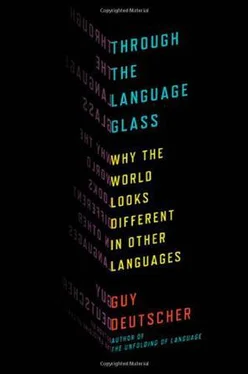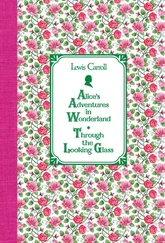In English, both senses of “gender”-the general meaning “type” and the more specific grammatical distinction-coexisted happily for a long time. As late as the eighteenth century, “gender” could still be used in an entirely sexless way. When the novelist Robert Bage wrote in 1784, “I also am a man of importance, a public man, Sir, of the patriotic gender,” he meant nothing more than “type.” But later on, this general sense of the word fell into disuse in everyday English, the “neuter” category also beat a retreat, and the masculine-feminine division came to dominate the meaning of the word. In the twentieth century, “gender” became simply a euphemism for “sex,” so if you find on some official form a request to fill in your “gender,” you are unlikely nowadays to write “patriotic.”
In some academic disciplines, notably “gender studies,” the sexual connotations of “gender” developed an even more specific sense and started being used to denote the social (rather than biological) aspects of the difference between women and men. “Gender studies” are thus concerned with the social roles played by the two sexes rather than with the differences between their anatomies.
Linguists, on the other hand, veered in exactly the opposite direction: they returned to the original meaning of the word, namely “type” or “kind,” and nowadays use it for any division of nouns according to some essential properties. These essential properties may be based on sex, but they do not have to be. Some languages, for example, have a gender distinction that is based only on “animacy,” the distinction between animate beings (people and animals of both sexes) and inanimate things. Other languages draw the line differently and make a gender distinction between human and non-human (animals and inanimate things). And there are also languages that divide nouns into much more specific genders. The African language Supyire from Mali has five genders: humans, big things, small things, collectives, and liquids. Bantu languages such as Swahili have up to ten genders, and the Australian language Ngan’gityemerri is said to have fifteen different genders, which include, among others, masculine human, feminine human, canines, non-canine animals, vegetables, drinks, and two different genders for spears (depending on size and material).
In short, when a linguist talks about “gender studies” she is just as likely to mean “animal, mineral, and vegetable” as the difference between men and women. Nevertheless, since the research on the influence of grammatical gender on the mind has so far been conducted exclusively on European languages, in which the distinction between masculine and feminine nouns dominates the gender system, our focus in the following pages will be on the masculine and feminine, and more exotic genders will make only a passing appearance.

The discussion so far may have given the impression that grammatical gender actually makes sense. The idea of grouping together objects with similar vital properties seems eminently reasonable in itself, so it would be only natural to assume that whatever criteria a language has chosen for making gender distinctions, it will abide by its own rules. We would expect, therefore, that a feminine gender would include all, and only all, female human beings or animals, that an inanimate gender would include all inanimate things, and only them, that a vegetable gender would include, well, vegetables.
There are in fact a handful of languages that do behave like that. In Tamil, there are three genders-masculine, feminine, and neuter-and you can pretty much tell which gender any noun belongs to given its obvious properties. Nouns denoting men (and male gods) are masculine; those denoting women and goddesses are feminine; everything else-objects, animals (and infants)-is neuter. Another straightforward case was Sumerian, the language spoken on the banks of the Euphrates some five thousand years ago by the people who invented writing and kick-started history. The Sumerian gender system was based not on sex but on the distinction between human and non-human, and nouns were assigned consistently to the appropriate gender. The only point of indecision was with the noun “slave,” which was sometimes deemed human and sometimes assigned to the non-human gender. Another language that can be said to belong to the elite club of logical gender is English. Gender is marked only on pronouns in English (“he,” “she,” “it”), and in general such pronouns are used transparently: “she” refers to women (and occasionally to female animals), “he” to men and to a few male animals, and “it” to everything else. The exceptions, such as “she” for a ship, are few and far between.
There are also some languages, such as Manambu from Papua New Guinea, where genders might not be entirely consistent, but where one can at least discern some basic threads of rationality in the system. In Manambu, masculine and feminine genders are assigned to inanimate objects, not just to men and women. But apparently there are reasonably transparent rules for the assignment. For instance, small and rounded things are feminine, while big and longish things are masculine. A belly is feminine, for example, but a pregnant woman’s belly is spoken of in the masculine gender once it has become really big. Intense things are masculine, less intense things feminine. Darkness is feminine when it’s not yet completely dark, but when it becomes pitch-black it turns masculine. You don’t have to agree with the logic, but at least you can follow it.
Finally, there are those languages, such as Turkish, Finnish, Estonian, Hungarian, Indonesian, and Vietnamese, that are entirely consistent about gender simply because they have no grammatical gender at all. In such languages, even pronouns referring to human beings do not bear gender distinctions, so there aren’t separate pronouns for “he” and “she.” When a Hungarian friend of mine is tired, he sometimes lets slip things like “she is Emma’s husband.” This is not because speakers of Hungarian are blind to the difference between men and women, only because they are not in the habit of specifying the sex of a person each and every time the person is mentioned.
If genders were always as straight as they are in English or Tamil, there would be little point in asking whether a gender system can affect people’s perception of objects. For if the grammatical gender of every object merely reflected its real-world properties (man, woman, inanimate, vegetable, etc.), it could add nothing to anyone’s associations that was not there objectively. But as it happens, languages with a consistent and transparent gender system are very much in the minority. The great majority of languages have wayward genders. Most European languages belong in this degenerate group: French, Italian, Spanish, Portuguese, Romanian, German, Dutch, Swedish, Norwegian, Danish, Russian, Polish, Czech, Greek.
Even in the most erratic gender systems, there is usually a core group of nouns that are assigned grammatical gender in a consistent way. In particular, male human beings almost always have masculine gender. Women, on the other hand, are much more often denied the privilege of belonging to the feminine gender and are relegated to the neuter gender instead. In German, there is a whole range of words for women that are treated as “it”: das Mädchen (girl, the diminutive form of “maid”), das Fräulein (unmarried woman, the diminutive of Frau ), das Weib (woman, cognate with English “wife”), or das Frauenzimmer (woman, but literally “lady chamber”: the original meaning referred to the living chambers of the lady, but the word started to be used for the entourage of a noble lady, then for particular members of the entourage, and hence to increasingly less distinguished women).
Читать дальше












